Snake plants, which have strap-like leaves and a hard, spiky side, are basically taller, more flamboyant succulents. They can be found in a wide range of strange and amazing variants throughout the tropical regions of Western Africa, Madagascar, and southern Asia. Read on and learn about rare snake plants.
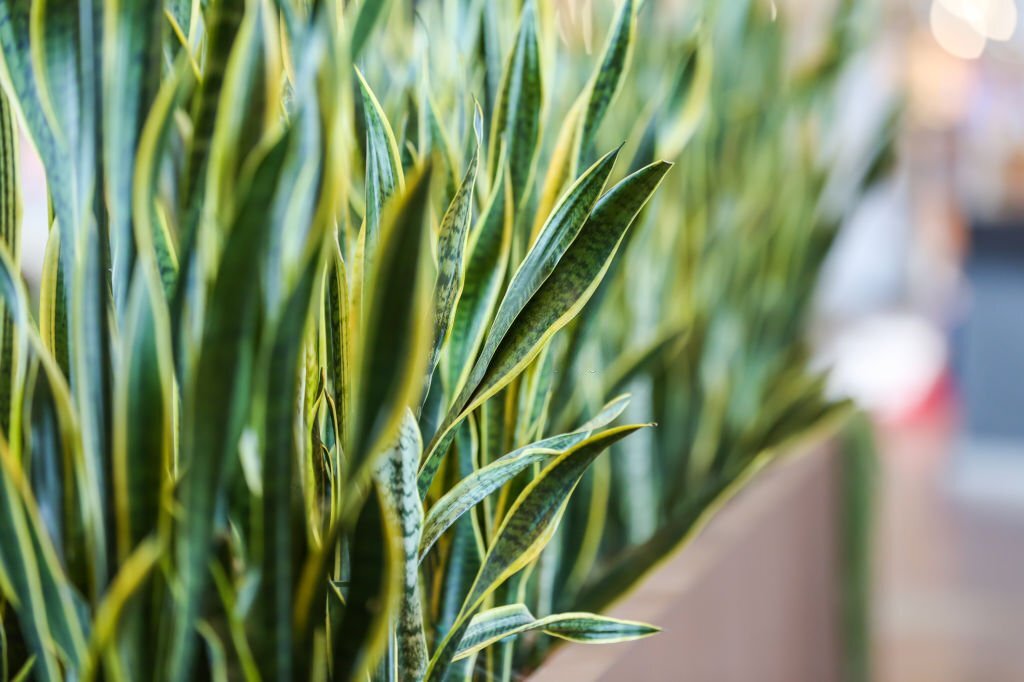
Although it may be difficult to identify with some of the following kinds due to their colors and peculiar leaf shaping, all snake plants are drought tolerant and highly forgiving in the face of neglect. They also retain the capacity to somehow remain fresh and perky.
The snake plant was previously assigned to the Sansevieria genus; the current classification is now Dracaena; for simplicity’s sake, we’ll continue using the more popular term below.
18 Rare Snake Plants
Here are 18 lesser-known snake plant varieties ranging from minimalist to dramatic characteristics.
1. Sansevieria Metallica/Siam Silver
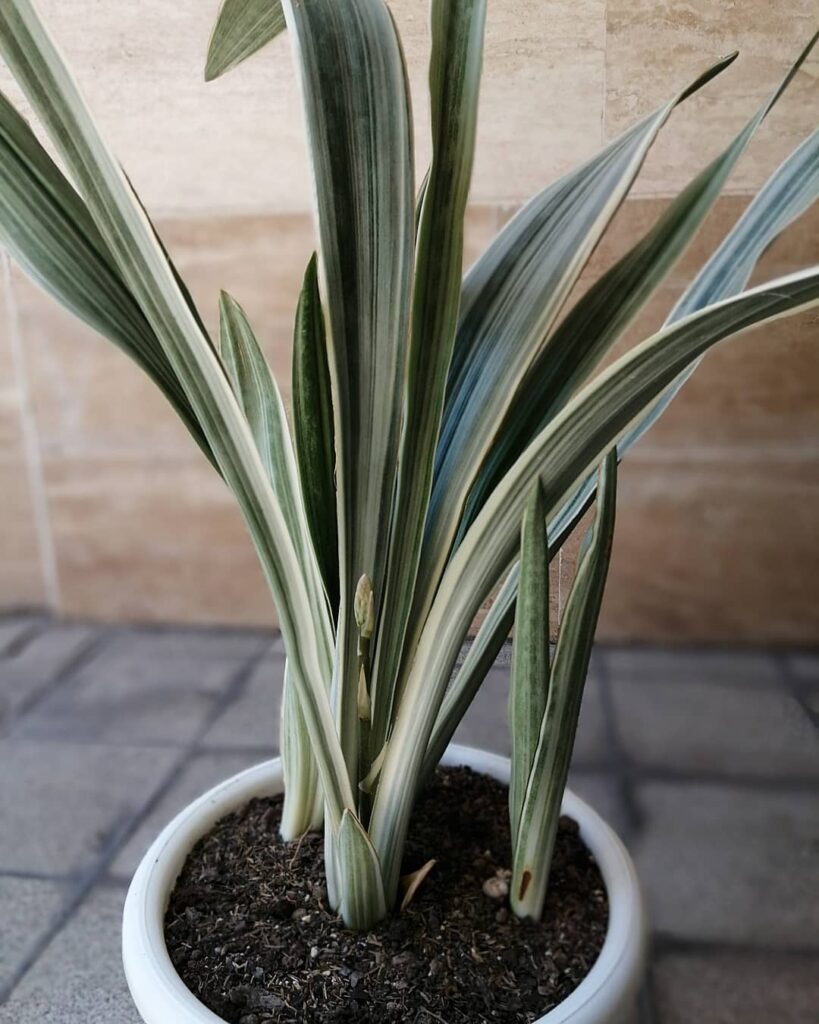
Siam Silver, often referred to as Sansevieria Metallica, has leathery, large green leaves marked with fine silver-grey stripes. It has a distinctive appearance, thanks to the addition of yellowish stripes on its edges. As the plant ages, the foliage gracefully and softly drapes, giving the impression that it is full and healthy.
They are the most gorgeous snake plant, in fact. Silver Siam thrives on sandy soil and is simple to grow. They can, however, also thrive in rich loam soils with good drainage. These miniature snake plants are often cultivated inside and used for decoration. Therefore, they need regular watering and partial to full sunlight.
Related: Snake Plant (Sansevieria): How To Get Your Plant To Flower and More
2. Sansevieria Ehrenbergii Samurai/Blue Sansevieria
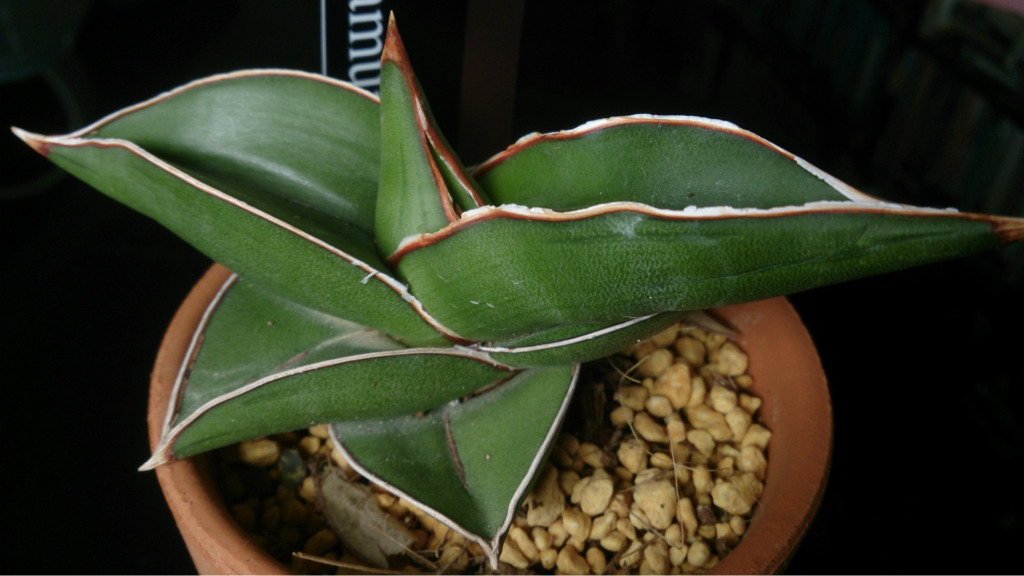
This plant, which goes by a variety of names, has a captivating appearance that elevates your garden. The leaves of the plant are twisted and bent inward. The leaves develop in meandering rows that alternate with one other. The leaves are quite substantial and attractively colored bottle green with coppery-gold margins.
The blade-like leaves of this snake plant, which are shorter than those of other snake plants, are what distinguish it from others. They need direct sunlight, although they may also survive in some shade. Additionally, the soil must be porous and well-drained for the plants to thrive. Finally, the plant’s graceful beauty can be a wonderful addition to your outdoor landscape.
3. Sansevieria Trifasciata Bantel’s Sensation/White Sansevieria
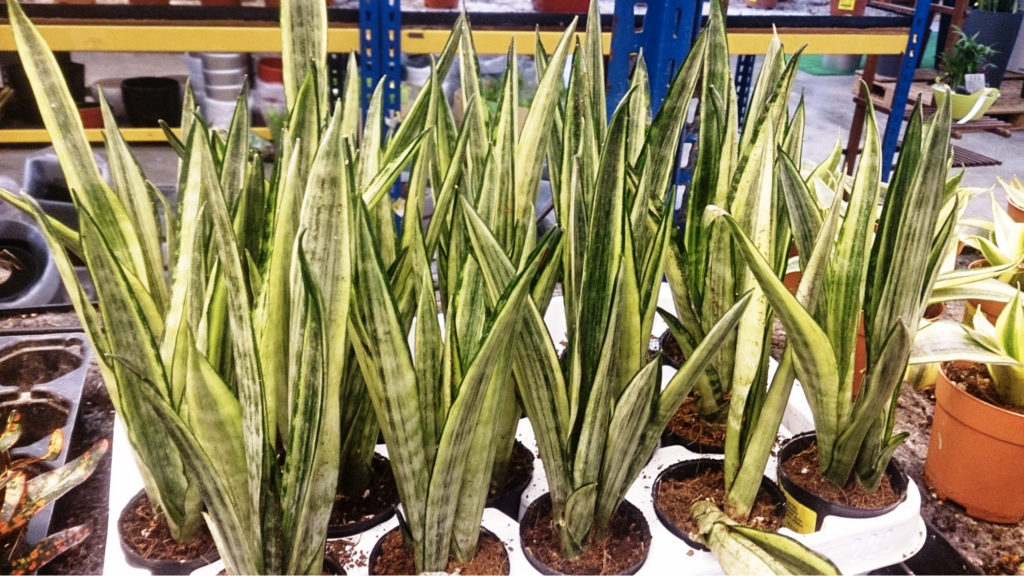
The origin of this tough plant is distinctive in some ways. It was created at a nursery using a snake plant type that is primarily found in tropical areas of western Africa. This plant has characteristic long, upright, and narrow leaves. The plant has a distinctively textured appearance due to its olive-green leaves with stripes of yellow, light green, and white.
Given that the plant doesn’t require a lot of water or sunlight, maintenance is not difficult. Sansevieria trifasciata’ laurentii’, a variegated snake plant, matures outdoors and blooms with fragrant flowers in the spring. Despite the fact that it requires little maintenance, it should not be kept in the afternoon sun.
4. Sansevieria Trifasciata Moonshine/Moonshine Snake Plant
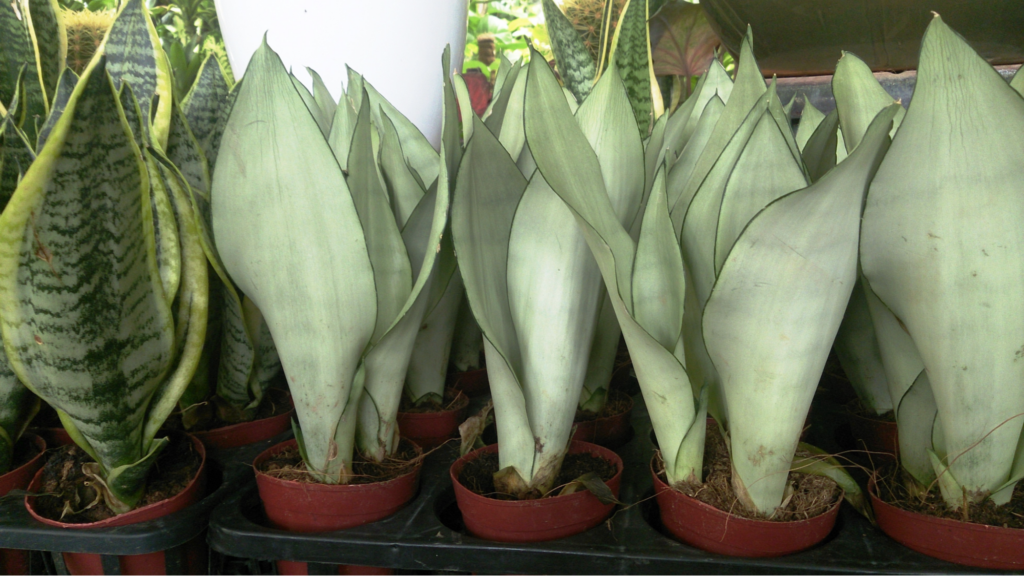
The group’s most beautiful snake plant variety is the unique Sansevieria Moonshine variant. Its large, silvery-green leaves with sharp edges and pointy points gave rise to the fairly sassy moniker “mother-in-laws-tongue”. This plant also has a dark green border and light green stripes on the surface of the foliage, which give it a distinctive appearance.
The plant is a lovely and useful addition to bedrooms because it has air-purifying properties that might promote restful sleep. They can grow up to two feet tall and need moderate to strong indirect sunshine. Additionally, it can withstand drought, so the plant won’t die if you don’t water it for a few days.
5. Sansevieria Roxburghiana Roxette/‘Indian Bowstring Hemp’
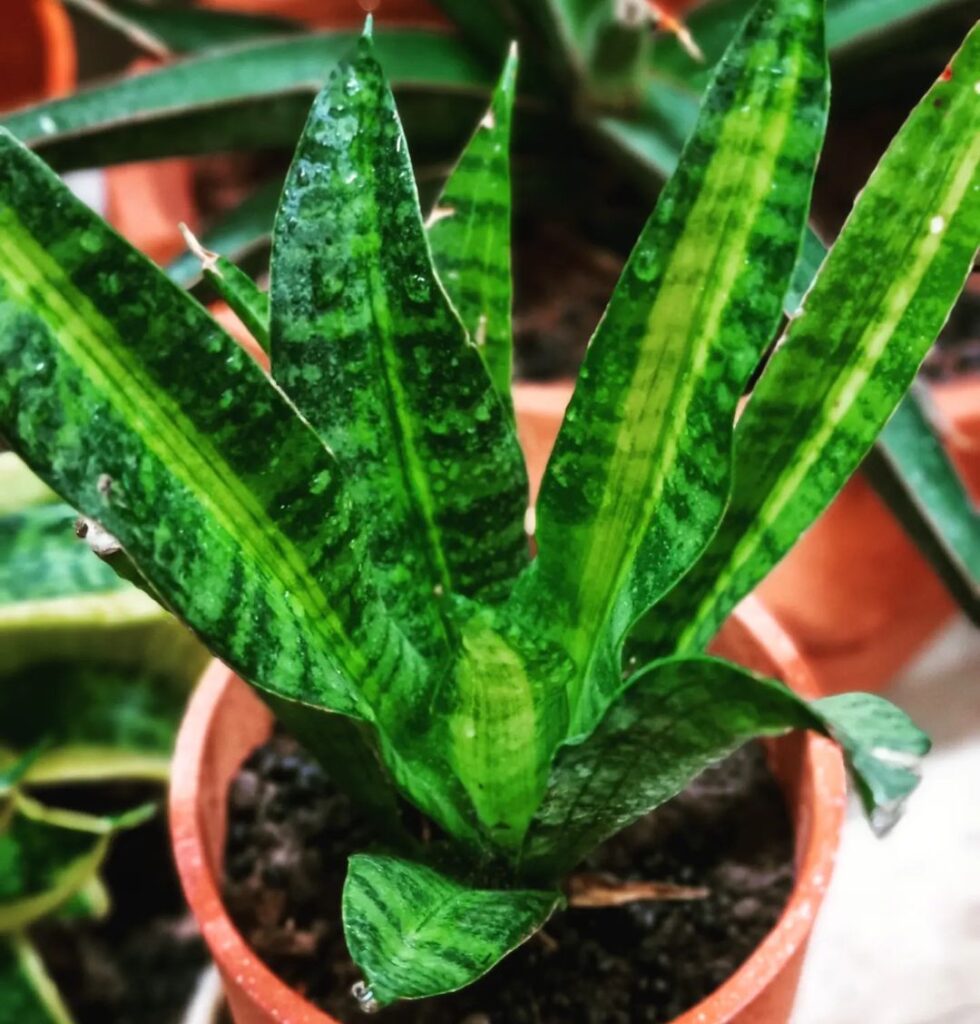
This succulent type of “snake plant” develops upright, fleshy, stiff leaves that resemble thorns. With its tall, untamed foliage that spreads in all directions, it appears more native than other sansevieria patens. It features a shiny exterior with pointed sharp points. The pale greenish yellow stripes and extensive mottling on the spear-shaped, green leaves are present.
Native to India, the snake plant is well known for its therapeutic benefits. For the treatment of Type 2 diabetes and other illnesses, the leaves extract is employed. Additionally, the leaves’ inherent flexibility is used to make bowstrings. The roots of the plant may reach great distances, and it is also very drought-resistant.
This is different from the more commonly known Viper’s Bowstring Hemp.
Related: 21 Types of Sansevieria – Indestructible, Exotic, and Elegant Air Purifiers
6. Sansevieria Cleopatra/Snake Plant Cleopatra
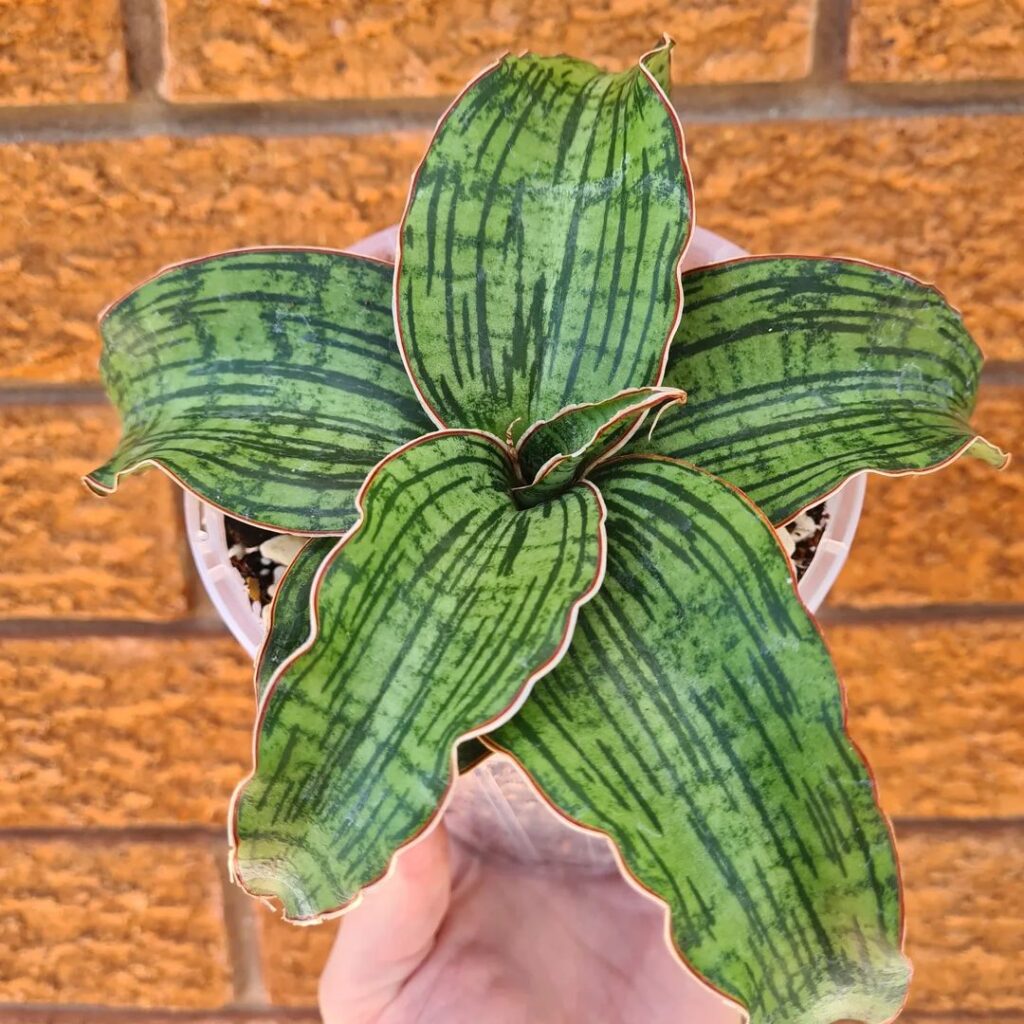
Due to its distinctive appeal and small form, this variation is particularly well-liked among snake plant collectors. The plant’s colorful foliage emerges from a rosette. The unevenly spaced vertical dark green stripes on the fairly green leaves’ surface. Bands of reddish-brown and white can be found along the margins.
The Sansevieria ‘Cleopatra’ plant thrives in bright indirect sunshine and enjoys relatively warm temperatures. When properly cared for, it can reach a height of four feet and live a very long time. The plant’s therapeutic uses include treating fever and treating inflammation. It also has anti-inflammatory qualities.
7. Sansevieria Trifasciata Black Dragon/Mother’s Tongue
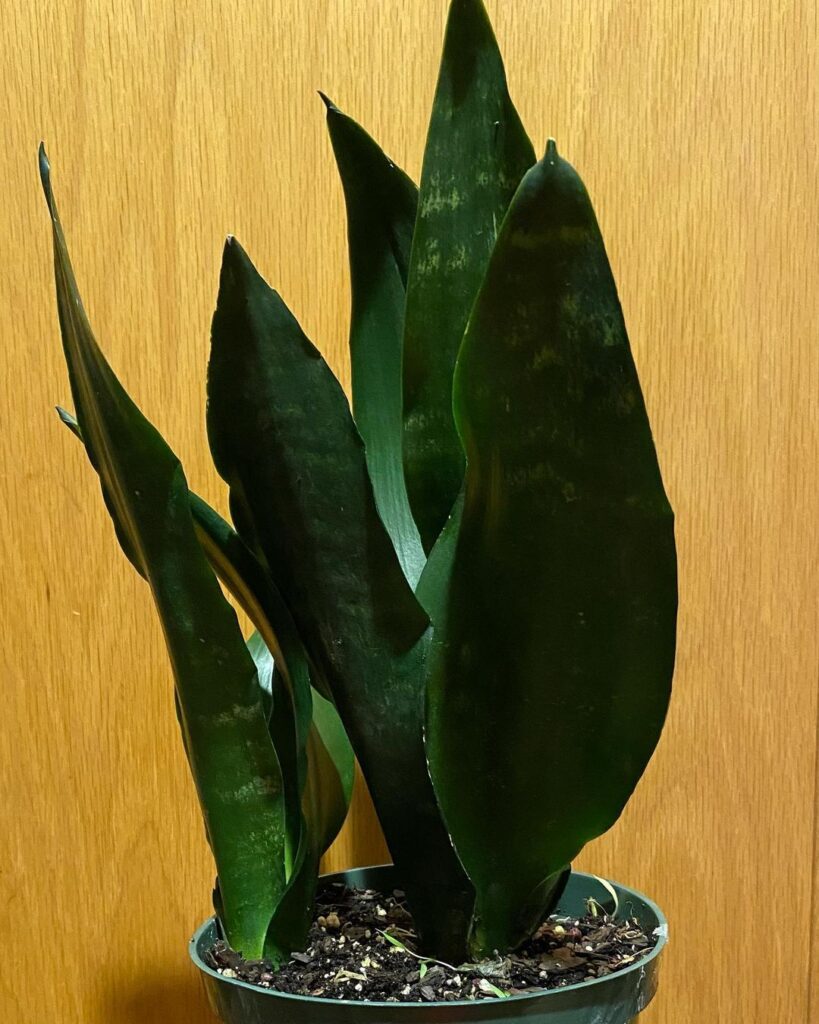
It is a different variety of the rare snake dragon dwarf sansevieria. The lustrous, forest-green leaves of this sansevieria trifasciata ‘black gold’ plant are unvariegated.
The plant can thrive in limited places and has uniform broad-lance-shaped foliage. Its rich green leaves and subtle underside mottling further contribute to the allure of your property.
It’s crucial to be aware that this plant can adapt to different sunshine and needs moderate to average humidity. The plant will develop with rich green, black gold foliage if exposed to direct sunlight. Keep them in the shade, though, if you prefer blacker and dark green leaves.
8. Sansevieria Trifasciata Golden Hahnii/Golden Bird’s Nest

The gorgeous, oval-shaped leaf of the Sansevieria Trifasciata plant, which emerges from a rosette, makes this plant very attractive. The waxy leaves are rippled in both light and dark green. The leaves’ pointed ends, and creamy yellow borders give them a refined and alluring appearance. It is a small indoor plant that you can keep.
The Sansevieria Trifasciata’ Golden Hahnii’ can be kept healthy and long-lived by giving them an occasional watering. The birds’ nests thrive in the summer and prefer temperate temperatures.
These plants will look better if you give them exposure to bright sunlight with occasional shade. The plant is, however, barely poisonous, therefore appropriate safety measures must be adopted.
9. Sansevieria Cylindrica/African Spear Plant
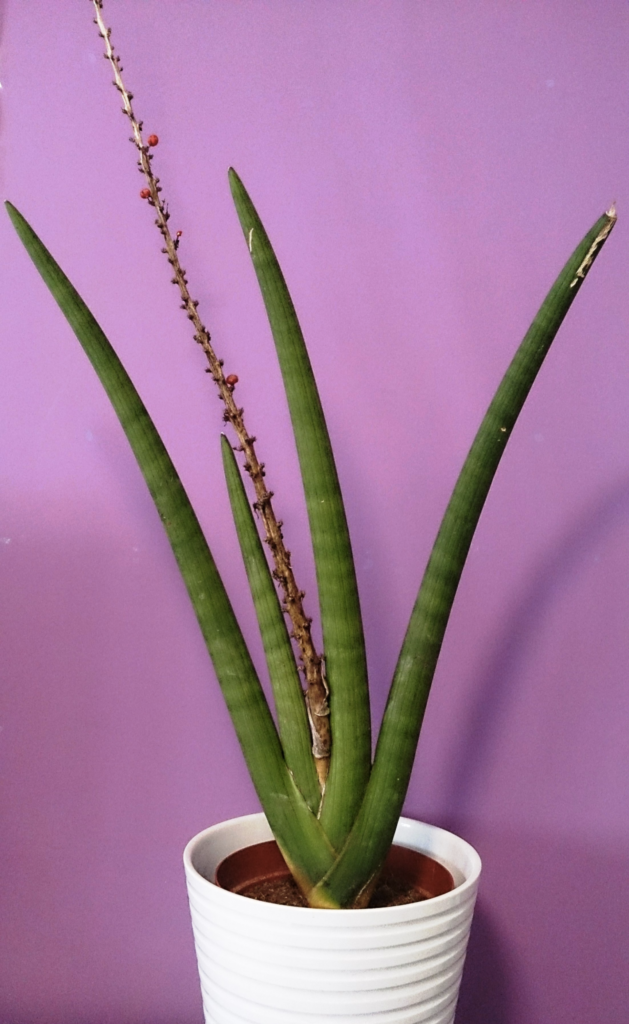
This perennial succulent grows erect and has long, slender, spherical foliage that resembles a tube. Sansevieria Cylindrica varslender’s blunt-tipped leaves are a light, grassy green color.
Additionally, they contain horizontal stripes of varied widths that are light green in hue. When grown outside, the plant can reach a height of six feet.
The plant prefers strong, direct sunshine that brings out its color and gives it a full, robust appearance. They won’t perish if you keep them in the shade, but their growth will be slower.
Additionally, fast-draining soil is necessary for the Sansevieria trifasciata ‘Cylindrica’ plant. The leaves are additionally braided to give them a captivating aspect.
10. Sansevieria Kirkii/Star Sansevieria
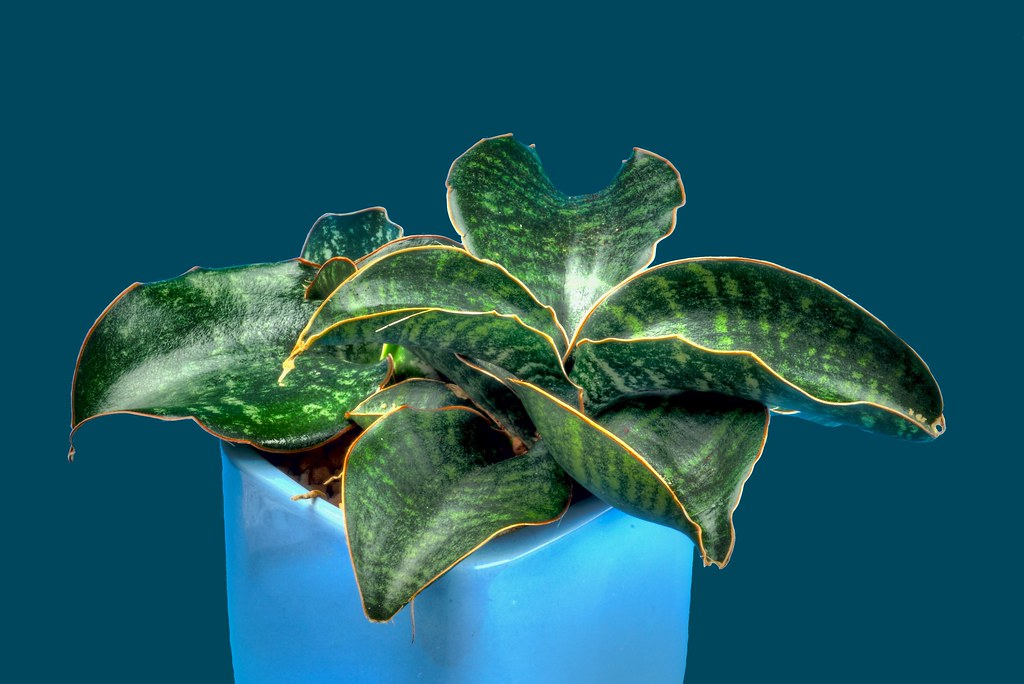
With its sword-like foliage that resembles a star with numerous points, this plant is remarkable. The plant’s leaves are arranged evenly and beautifully outward. The leaves are dull green with sporadic white and dark green lines and dots. The plant looks attractive because of its copper coloured margins that are also undulating.
Sansevieria kirkii “star” plants produce fragrant, greenish-white flowers with blossoms. Mild light is preferred by the plants.
However, the edges can turn yellow from too much light, giving them a dreary appearance. Keep the plant away from drafts and freezing weather. It is preferable to keep this “star sansevieria” plant away from children and dogs because it is slightly hazardous if consumed.
11. Sansevieria Masoniana Or Whale Fin Snake Plant
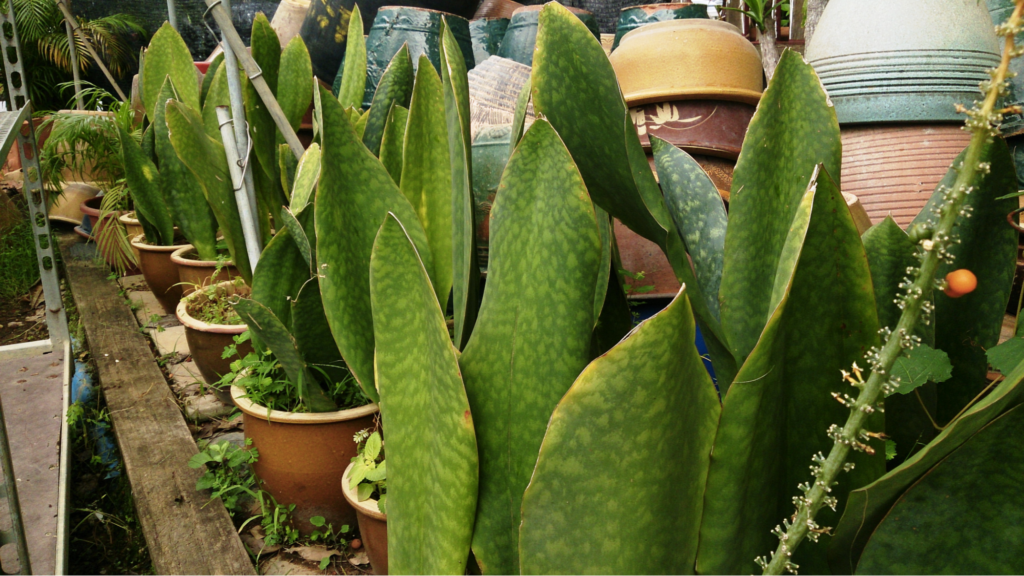
This plant is also known as mason’s congo and was named after its discoverer, Maurice Mason. It also only consists of a massive leaf that resembles a whale’s fin.
Despite having roots, the plant just seems to be a leaf protruding out of the pot. It belongs to the most uncommon snake plant species. The broad surface of the vivid green leaf is speckled with pale green flecks.
It is primarily grown indoors and needs some direct sunshine, however it may also thrive in dim light. However, if you want a brighter color on their leaves, keep in mind to give them plenty of light. The plant also favors a lot of drainage in the soil.
Related: Hello, Why Is It Yellow? 5 Reasons Why Your Sansevireia Is Changing Color
12. Rhino Grass
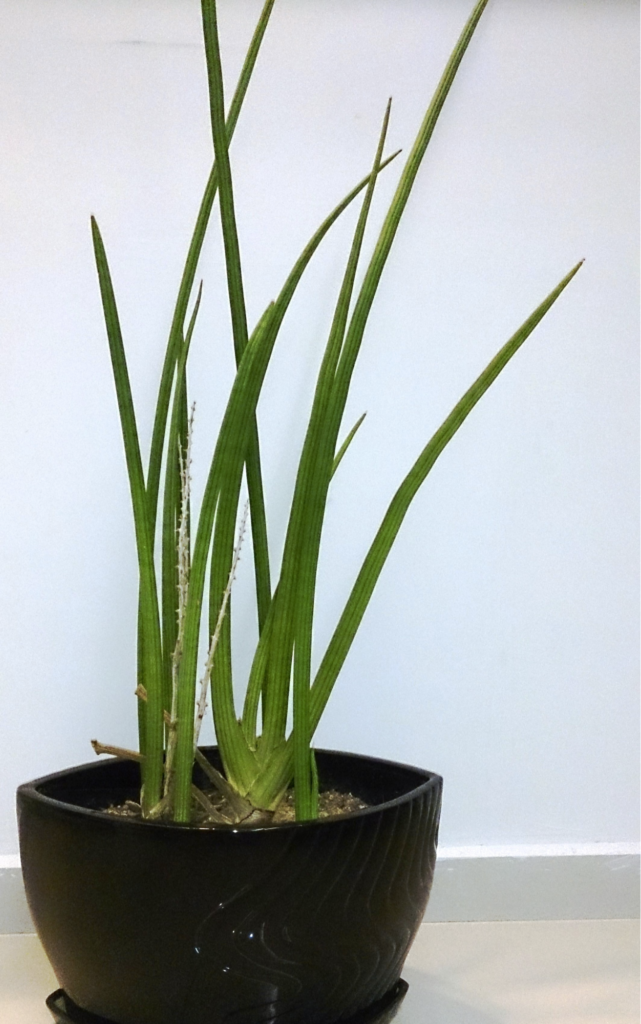
Rhino grass is a flowering succulent that naturally grows in locations with summer rainfall, close to river banks, and open savanna woods. It has two tiers of stiff, pointed, cylindrical leaves. Younger leaves feature pale bands, and older leaves have darker, almost invisible, greenish-black bands.
The leaves of the plant develop longitudinal grooves as it ages. Groups of 6–10 small, pinkish blooms with a grayish–blue base are produced by Dracaena Desert.
13. Sayuri Snake Plant
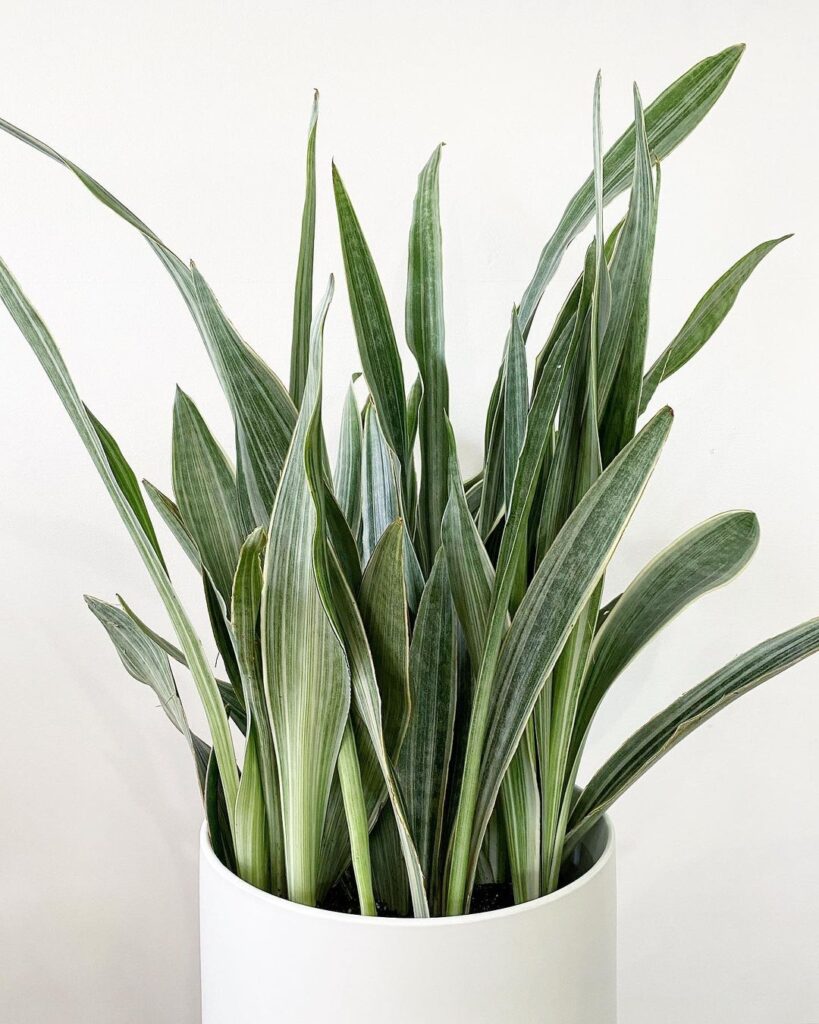
The Sayuri Snake Plant, often known as Silver Dracaena, is a cross between Dracaena Gabriella and Dracaena Cylindrica. It has thin, grayish-green leaves with white, blue, and silver stripes running vertically.
It has a distinct hue that gives it a silvery metallic appearance. It is a great choice for small spaces in the house because of the shape of its leaves, which resemble those of mother-in-tongue. law’s
The broad sword-shaped, stiff, upright leaves are suitable for homes with tight corners since they maintain their upright position for the most part. Although they form rosettes, the long leaves obscure the pattern.
Sayuri rarely flower, but when they do, the blooms are greenish-white and have a pleasant aroma.
14. Starfish Dracaena
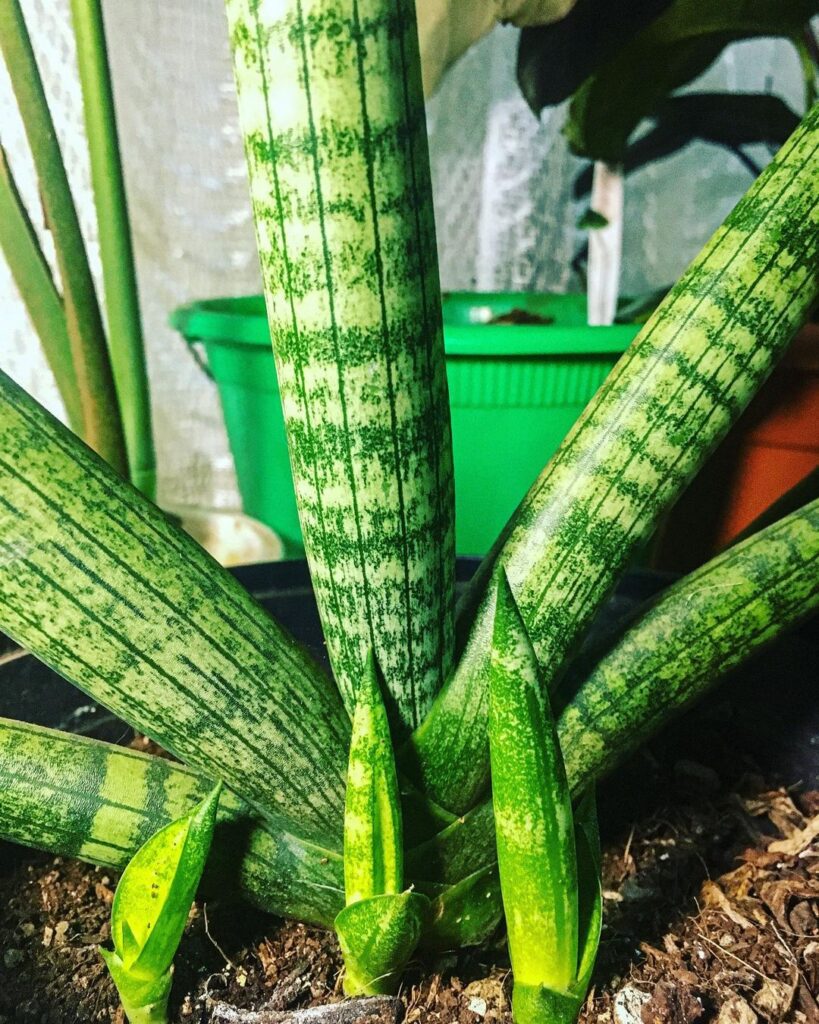
As its common name might imply, the starfish resembles a sea creature. It has leaves that grow apart instead of upright when they emerge from a basal rosette. Gravity may cause the leaf to curl slightly as the plant ages.
The leaves are green with an erratic, horizontal pale greenish-gray pattern. The Starfish Snake Plant is a little shorter than most types, only reaching a height of around a foot. Without intense, indirect light, this cultivar is unlikely to bloom with pinkish-white petals.
15. Kenya Hyacinth
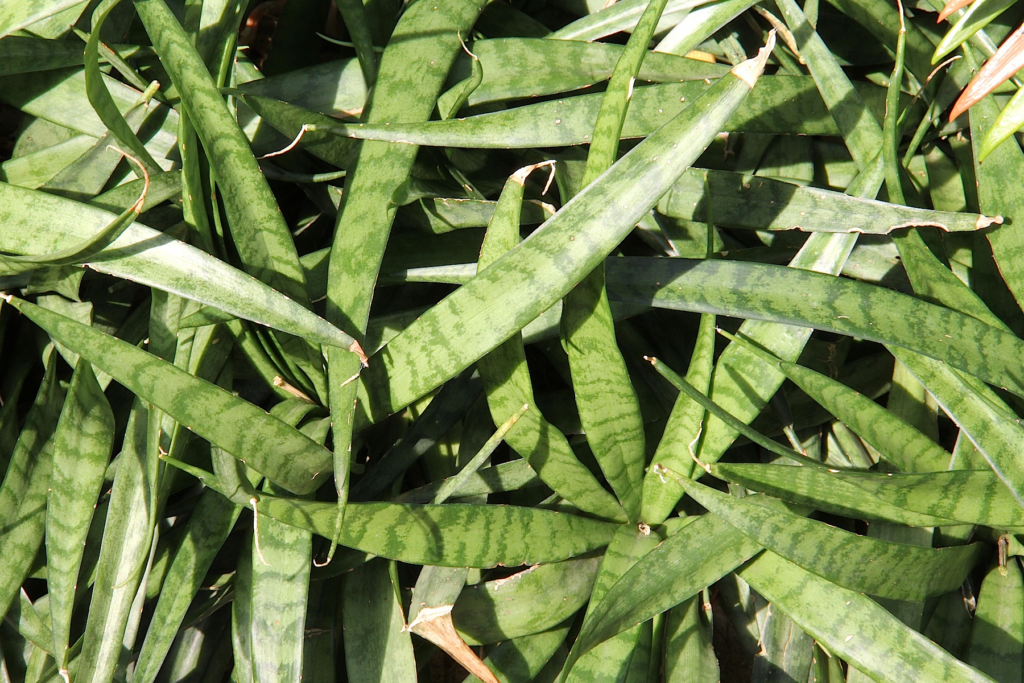
Dracaena Parva, sometimes known as the Kenya Hyacinth Snake Plant, is a blooming perennial that is indigenous to the woodlands of east Africa. Because of its moderate development, you can keep it in the same container for longer.
Because it blooms, the Dracaena Parva variety differs from most others. Its common name derives from the flowers’ hyacinth-like scent. What’s best? This plant has recurring blooms.
The first person to find and identify this species was Nicolas Edward Brown in 1915. It has somewhat concave, slender, lance-shaped leaves.
Younger plants feature emerald green leaves with horizontal stripes of light green. As the plant ages, the bands disappear, leaving smooth, deep green leaves.
16. Dracaena Twisted Sister
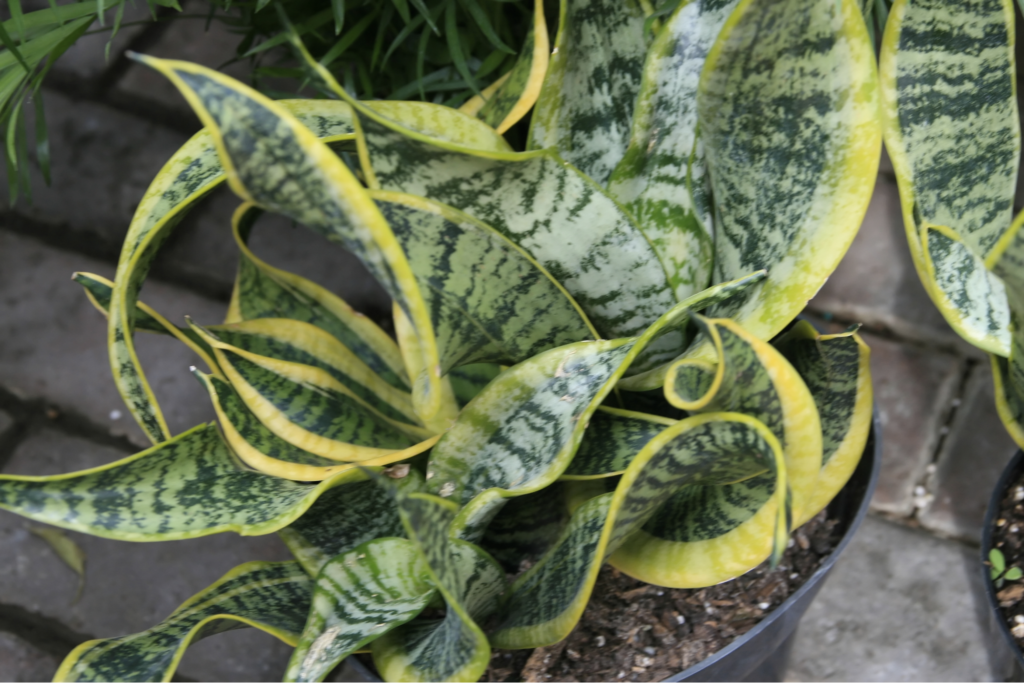
The foliage of the Twisted Sister Snake Plant has vivid gold and green variegation. The leaves twisting motion as they develop from the base give the plant its common name. This unusual succulent grows horizontally, unlike the majority of kinds, which grow vertically. It creates a striking accent piece.
With its twisted rosettes, it closely resembles the Bird’s Nest type and matures to a height of around 15 inches. Twisted Sister prefers sunny, filtered sunlight, however it may tolerate shade.
17. Whitney Dracaena
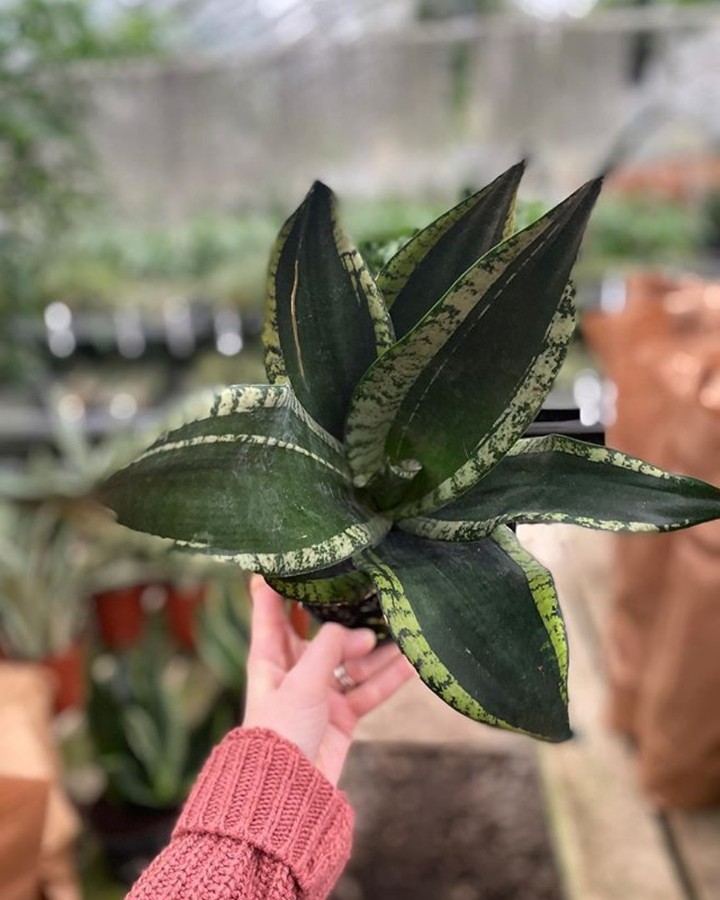
Smaller plants called Whitney Dracaena, also known as Snake Plant Whitney, produce four to six rosettes. The margins of its stiff, thick leaves are mottled with white.
For those who enjoy taking their houseplants on vacation but don’t want to worry about damaging them, Dracaena Whitney is a great choice.
It requires very little maintenance because it thrives in the majority of settings inside your home and is incredibly drought tolerant. Brighter lighting, on the other hand, encourages more vivid and contrasting colors.
18. Yoat’s Horn
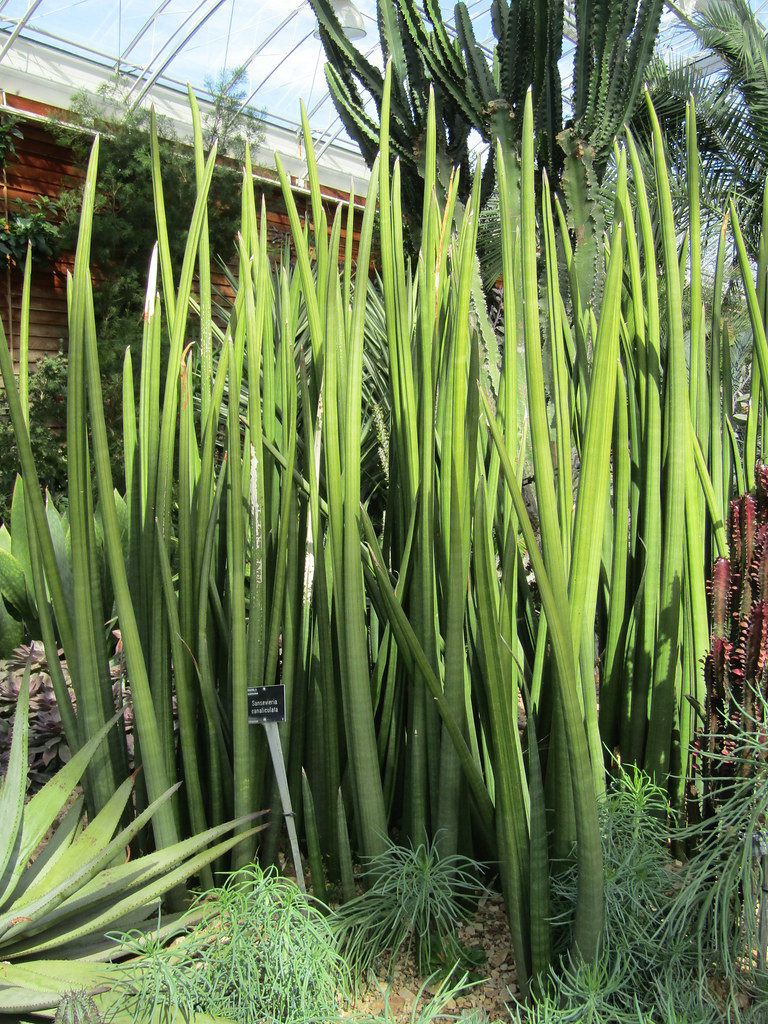
A perennial succulent called Yoat’s Horn, or Dracaena Canaliculata, is indigenous to tropical coastal areas of northern Madagascar. This plant has linearly grooved, cylindrical leaves that grow singly. It may become straight or slightly curved.
The lack of distinguishing marks makes the green leaves stand out against the majority of Dracaenas. It’s not the most uncommon kind of snake plant, but it is one of the trickier varieties to locate.
Frequently Asked Questions(FAQs)
- Are snake plants simple to maintain?
Once you locate the ideal location for them, snake plants are one of those plants that require very little upkeep. Unlike many other house plants, they are simple to maintain and difficult to destroy.
- How quickly does a snake plant expand?
The snake plant generally grows slowly, but if you put it outside in the summer, it can have a growth spurt.
- What is the lifespan of a snake plant?
A snake plant can survive up to 25 years or longer, however on average they only live for five to ten years.
- What distinguishes Dracaena trifasciata from Nassauvia serpens?
Despite sharing the name “snake plant,” Dracaena trifasciata and Nassauvia serpens have no connection to one another. Native to the Falkland Islands, Nassauvia serpens is a perennial shrub of the aster family. Unfortunately, they don’t have similar appearances.
- Is the Snake Plant poisonous?
The snake plant contains mildly harmful components for humans and highly toxic components for animals. The plant’s saponins have the ability to enlarge and numb the human tongue and throat. Animals exhibit more severe symptoms.
Final Thoughts
Snake plants are renowned for their low maintenance requirements and distinctive qualities. Although most variants have the same snake-like design, some kinds have erect, flat leaves while others have cylindrical leaves.
These exceptionally drought-tolerant plants don’t need to be watered frequently and thrive in a variety of lighting and temperature situations. However, it is important to take into account any particular requirements because each variety or cultivar may have different needs.
Each improves the aesthetics of your house while ensuring clean, healthy air within. Additionally, due to their unusual appearance and rarity, they are prized possessions for plant collectors and require expert snake plant care.
Know more about the propagation of these gorgeous snake plants. You can also browse through the proper potting of Sansevierias or the most common problems you can encounter in Snake plant gardening.
Editor’s Recommendations
How To Propagate And Care For Prayer Plants | A Comprehensive Guide
Peace Lily: Top Reasons Why They Droop and How To Fix Them
Spider Plant: 12 Stunning Varieties You Can Get For Your Home







